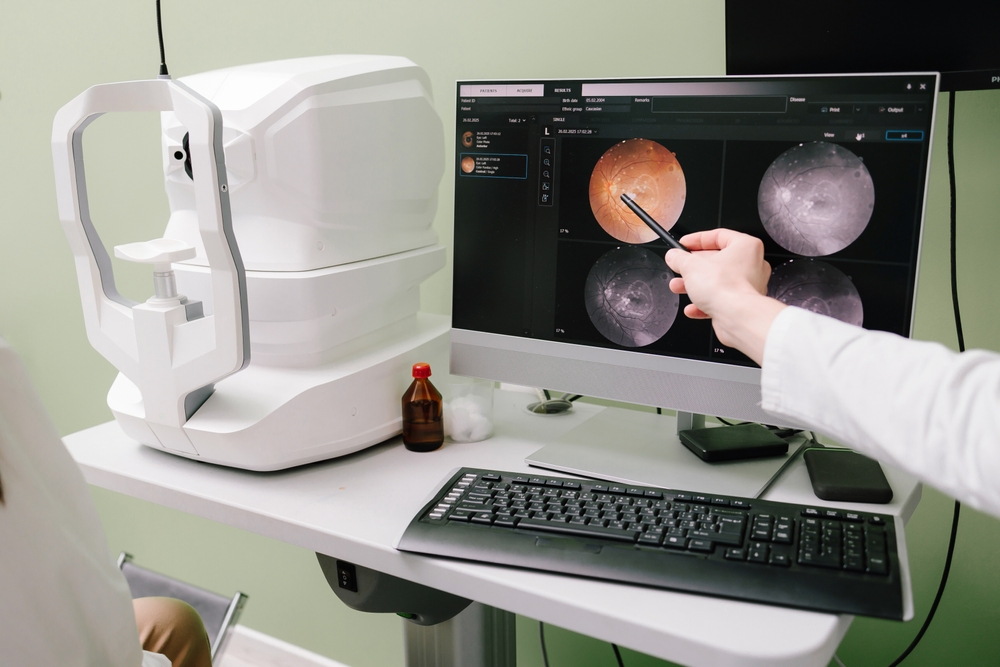Blog List
Learn more about optometry care and services in our blog!

Your eyes are remarkable, complex organs that deserve the best care and attention. At Insight Eyecare, we believe in protecting your sight before problems arise. Thanks to advanced technology like digital retinal photography, our team can detect eye diseases in their earliest stages - long before you notice symptoms.

Contact lenses offer convenience, comfort, and clear vision - but only when they’re used correctly. Many wearers develop bad habits over time that can lead to discomfort, infections, or long-term vision problems. At Insight Eyecare, we want to help you get the most out of your contact lenses while keeping your eyes healthy. Here are some of the most common mistakes people make and how you can avoid them.

For those looking for freedom from glasses and contact lenses during the day, Corneal Refractive Therapy (CRT) offers a safe and effective solution. Also known as orthokeratology (Ortho-K), this non-surgical treatment uses specially designed rigid gas-permeable lenses worn overnight to gently reshape the cornea. When the lenses are removed in the morning, patients enjoy clear vision throughout the day without corrective eyewear.

Keratoconus is a progressive eye condition that can significantly impact your vision if left undiagnosed or untreated. Because early detection can help slow its progression and preserve vision, it’s important to understand what keratoconus is, the signs to watch for, and the treatment options available.

Glaucoma is a serious eye condition that can lead to permanent vision loss if it isn’t detected early. Because it often develops without noticeable symptoms, many people don’t realize they have it until their vision is already affected. Knowing when to start getting checked for glaucoma can make a significant difference in protecting your long-term eye health.

When it comes to finding the perfect pair of glasses, there's more to consider than just vision correction. Your eyewear is a reflection of your personality, lifestyle, and fashion sense. At Insight Eyecare, our optical boutique goes beyond the basics to offer a curated collection of high-quality frames that combine function, comfort, and style.

If you’ve ever dreamed of waking up and seeing clearly without the need for glasses or contact lenses, LASIK surgery may be the solution you've been looking for. LASIK, which stands for Laser-Assisted In Situ Keratomileusis, is a popular and effective refractive surgery designed to correct common vision problems such as nearsightedness, farsightedness, and astigmatism. At Insight Eyecare, we are committed to guiding our patients through every step of their vision correction journey, including LASIK co-management for the best possible outcomes.

Myopia is a growing concern among children and young adults worldwide. Not only does it affect daily vision, but when left unmanaged, it can increase the risk of serious eye conditions later in life, including retinal detachment, glaucoma, and macular degeneration. At Insight Eyecare, we are committed to helping families manage myopia with personalized care. Here are some top tips to consider.

As a parent, you want to give your child the best opportunities to thrive, and vision plays a huge role in their everyday life. If your child struggles with glasses slipping down their nose during soccer practice or feels self-conscious wearing them at school, you may have wondered if contact lenses are an option. At Insight Eyecare, we’ve helped many families in Las Vegas and the surrounding areas navigate this decision, and we’re here to answer your biggest questions about contact lenses for kids.

Keratoconus is a progressive eye condition that causes the cornea to thin and bulge into a cone-like shape, leading to distorted vision and increased light sensitivity. While the exact cause of keratoconus remains unknown, advancements in diagnostic tools and treatment options have significantly improved patient outcomes. Early detection and tailored management strategies can help preserve vision and enhance quality of life.








